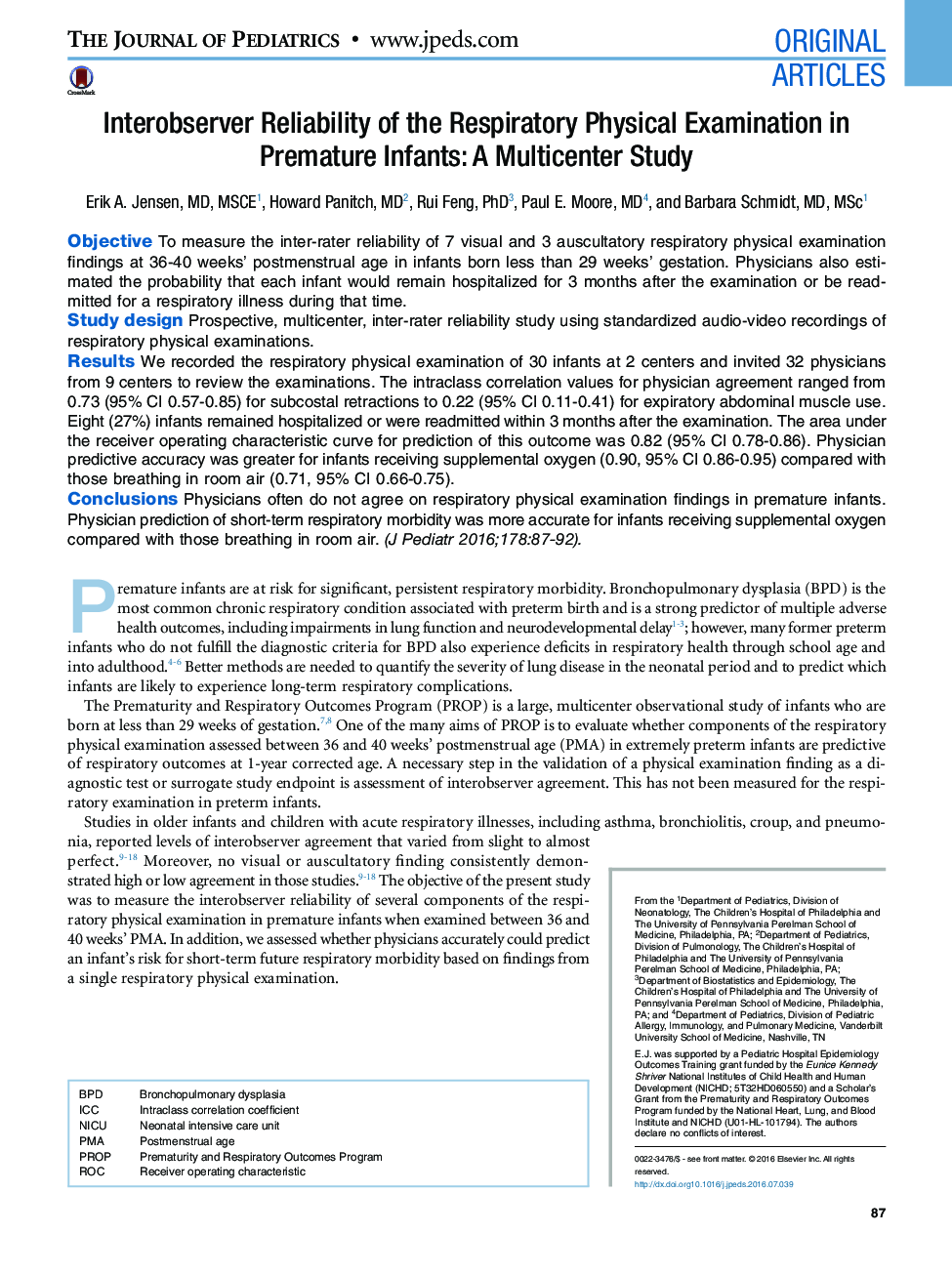| Article ID | Journal | Published Year | Pages | File Type |
|---|---|---|---|---|
| 5719757 | The Journal of Pediatrics | 2016 | 6 Pages |
ObjectiveTo measure the inter-rater reliability of 7 visual and 3 auscultatory respiratory physical examination findings at 36-40 weeks' postmenstrual age in infants born less than 29 weeks' gestation. Physicians also estimated the probability that each infant would remain hospitalized for 3 months after the examination or be readmitted for a respiratory illness during that time.Study designProspective, multicenter, inter-rater reliability study using standardized audio-video recordings of respiratory physical examinations.ResultsWe recorded the respiratory physical examination of 30 infants at 2 centers and invited 32 physicians from 9 centers to review the examinations. The intraclass correlation values for physician agreement ranged from 0.73 (95% CI 0.57-0.85) for subcostal retractions to 0.22 (95% CI 0.11-0.41) for expiratory abdominal muscle use. Eight (27%) infants remained hospitalized or were readmitted within 3 months after the examination. The area under the receiver operating characteristic curve for prediction of this outcome was 0.82 (95% CI 0.78-0.86). Physician predictive accuracy was greater for infants receiving supplemental oxygen (0.90, 95% CI 0.86-0.95) compared with those breathing in room air (0.71, 95% CI 0.66-0.75).ConclusionsPhysicians often do not agree on respiratory physical examination findings in premature infants. Physician prediction of short-term respiratory morbidity was more accurate for infants receiving supplemental oxygen compared with those breathing in room air.
